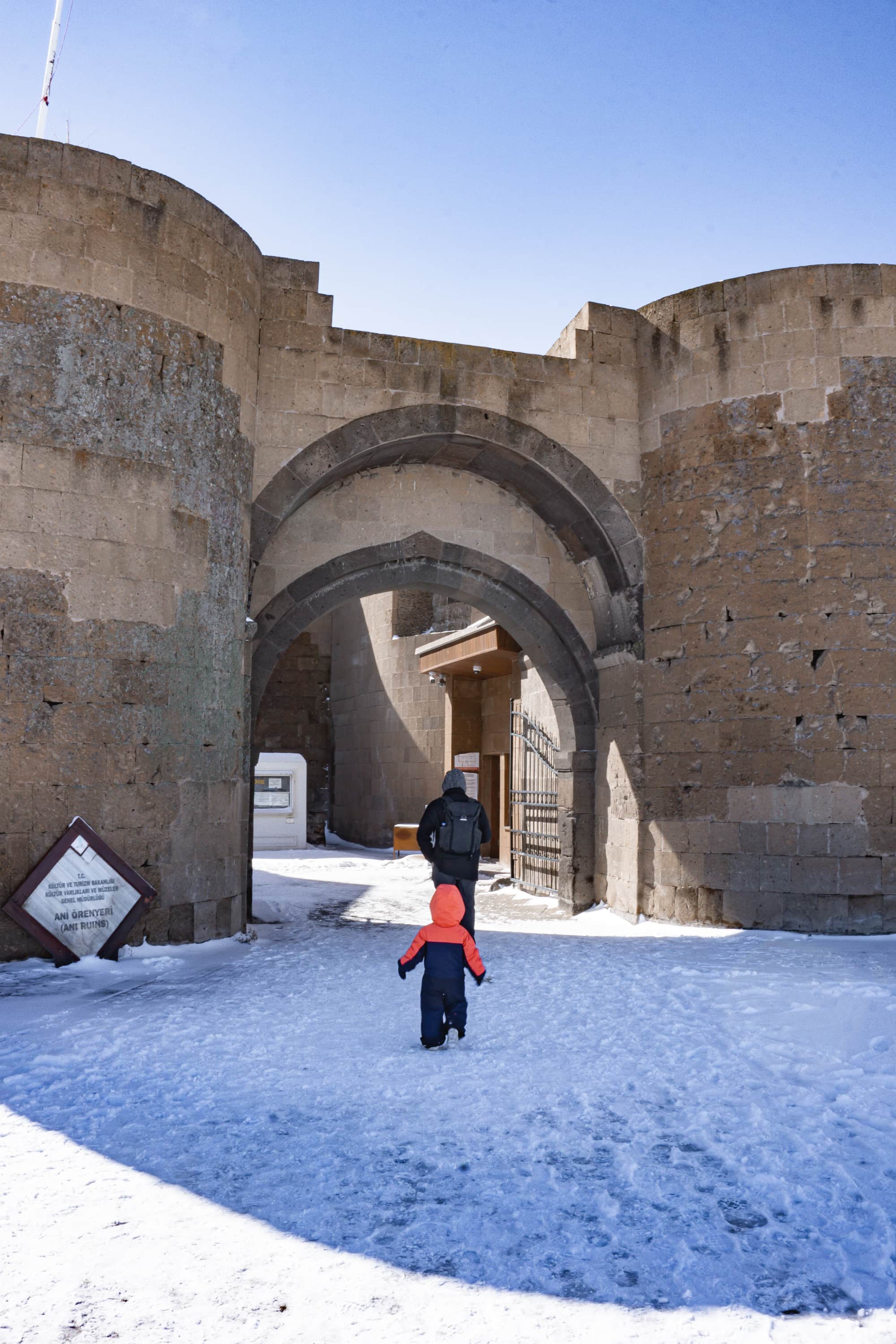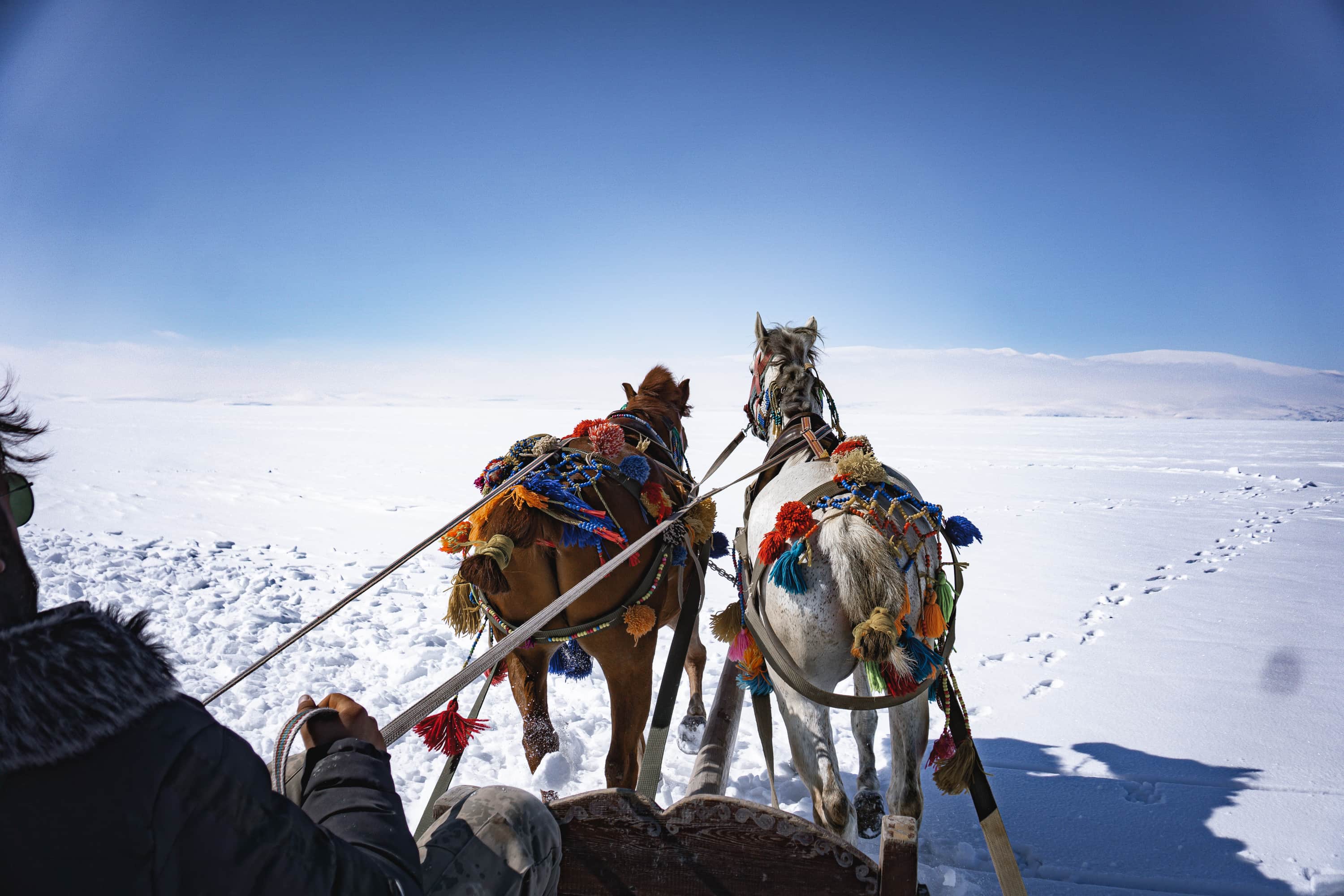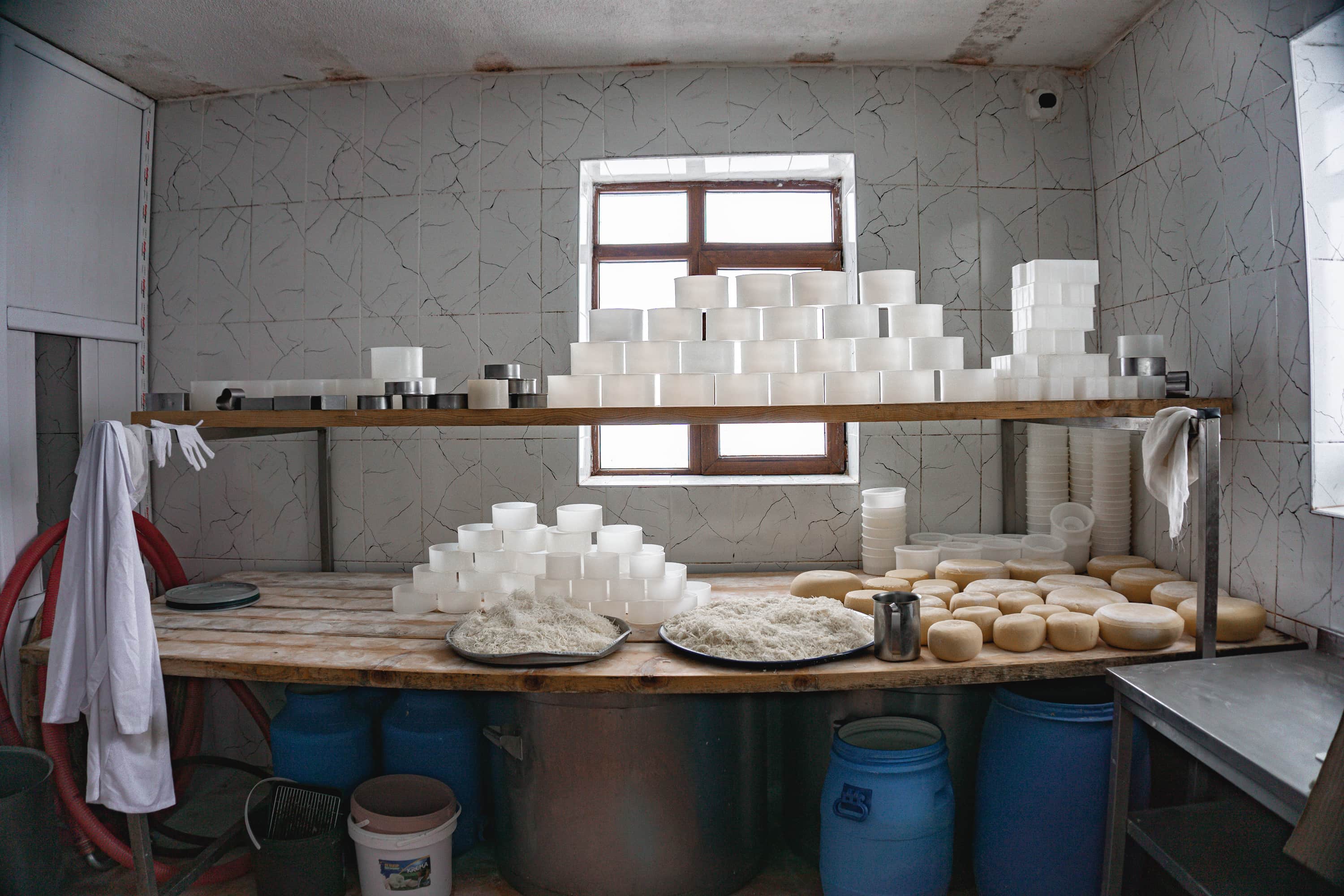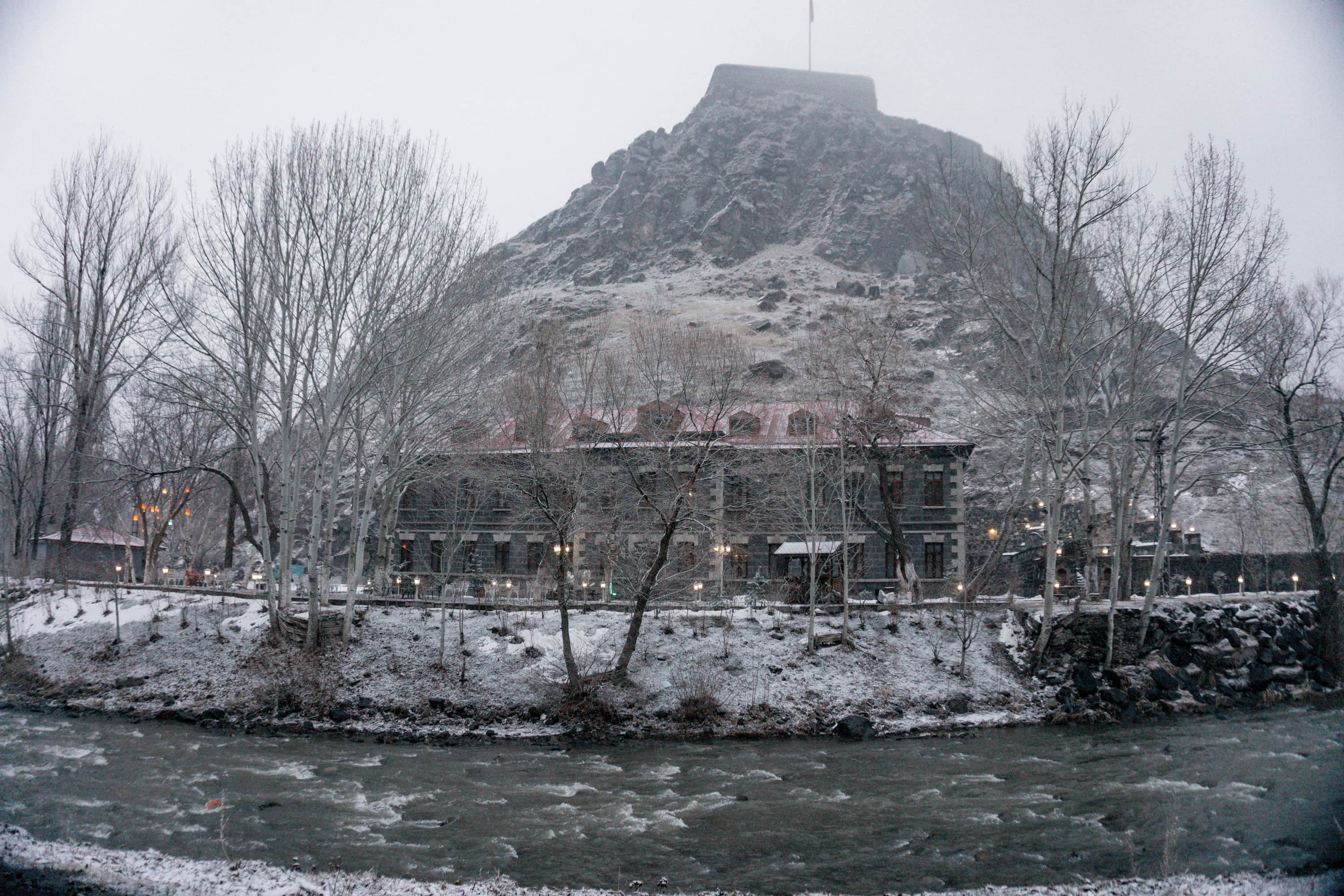TURKEY: Top 3 Day Trips from Kars
IMPORTANT: This post covers only the day trips from Kars City. Check out our other Kars post below:
- Part 1 – TURKEY: Your Guide to Skiing in Turkey – Sarıkamış/Kars
- Part 2 – TURKEY: Top 5 sites in Kars City – YOUR COMPLETE GUIDE
- Part 3 – TURKEY: Top 3 Day Trips from Kars – THIS ONE!
Intro/Little Recap:
After completing our 2 week Black Sea road trip, I wanted more of Eastern Turkey! I have always has a list of places to visit, but due to some crazy COVID restrictions, it’s put us behind on our travels. COVID has forced us to last minute travel plan, and I have to say… I am loving it. Our Black Sea Road Trip was Road Trip was planned just a mere 10 days before we left. And this trip was somewhat similar!
Each winter we try to get to a more ‘wintery’ area, wether it’s been Germany for Christmas or Uladağ with friends. I love my warm winter Izmir but it’s fun to go play in the snow and ski for a few days a year!
Over 2019 Christmas, our family headed up to Uludag to ski with some friends. We plan to do the same this year but there wasn’t any snow in Uludag yet! We still had the itch, ok – more so Catie did, and we decided to head out east instead! This way we can see more of Eastern Turkey AND get our ski fix in!
Our 2020 trip to Uludağ with friends didn’t pan out this year, leaving us wide open to exploring other locations. Some other friends of ours are prolific skiers and they suggested we look into ski resort over near Erzurum and Kars. So we did and picked KARS!
And of course… in usual ‘Catie’ fashion, we can’t just ‘go skiing’! We wanted to see some of the other sites around Kars as well!

More about Day Trips from Kars!
IN THIS POST:
Where is Kars
Kars is the capital of the Kars province is located in the far northeast region of Turkey. Situated on a plateau 5,740 feet (1,750 metres) above sea level on the Kars River, the city of Kars is only an hour drive to the border with Armenia (which, by the way, you can not cross).
The 3 places I am suggesting to visit are all within a 1-2 hour driving radius by car as you can see in the second picture.


Bit of History
The city’s name of Kars is said to be derived from the Armenian word hars, meaning “bride” or possibly the Georgian word kari meaning “the gate” since it was a border stronghold.
For the full history of Kars, check out my other complete guide to Kars city – START HERE with your TOP 5 Sites in Kars post!

Here are our Top 3 Day Trips from Kars City, Turkey:
1. UNESCO ANI HABARLERI – ANI ÖRENLERI
Only 42 kilometers distance to Kars, the most notable and popular site for both Turks and foreign tourist is Ani Heberleri. Why? In Ani’s prime time, this thriving ancient capital of the Bagratid Kingdom of Armenia grew to be one of the four biggest cities of the world, having a population of over 100,000 while hosting 24 different civilizations.
Being located on the Silk Road, Ani was established on a volcanic landscape to the West of Arpaçay River separating Turkey and Armenia (which you can not cross over into). But you can stand at the edge of the site and see the river below with its destroyed brides and see the land of Armenia and its boarder watch towers!






This site holds 21 historical building: a temple, church, palace, caravansary, mosque, bath, and mill. If you are an historic junkie and want to know the ins and out of this place before you go, check out the UNESCO post explaining everything!
After the kingdom collapsed, Ani experienced a long history of war, looting, vandalism, capture, and transfer of power. Situated on the eastern Turkish province Kars and bordering Armenia, the Ani site is open to the public for visiting.

This archeological site is very large and all the sites are spread out. This means a LOT of walking! If you are coming on the busy season and the weather is nice, after entering the city walls, we recommend that you walk to the right. The tours usually generally start from the left making the right side very calm. BUT if you come during the cold winter, TURN LEFT so you get to see the cool stuff first before you freeze!}
Here are the places you must see at Ani:

- Tigran Honents Church: This is why we say to turn left if you can. This Church is the one you DO NOT want to miss. Unfortunately it is one of the furthest from the entrance and you can’t see it either! You have to walk the path to the end and then take the steps down the hill to see it. However, you will be rewarded with the most beautiful interior space completely decorated with frescoes of scenes from the Bible and particularly the lives of Jesus and Mary.
- Ani Cathedral: There is a walking path that goes straight from the entrance directly down the middle to this church. It is the largest structure by far and the one you see first. Everyone, including us, seemed to gravitate towards it. There isn’t much on the inside though, outside of its impressive size.
- Ebu’l Manuçehr Camii/Mosque: Built in 1086, this mosque is located at the southwest part of the city just before the road leading into the citadel.
- St. Gregory of Abumarents: This is the pics everyone see for Ani. The Armenian style architecture, similar to the Kümbet Camisi in Kars City. The inside is in a sad state, but the outside is beautiful, and a great shot for getting Armenia in the background.











Getting There: Ani is located 45 km southeast of Kars. It takes about a hour to get there by car. While we had a car, you would join an organized day tour from the center of Kars. The ruins are open between 09.00-19.00 in April-October and between 08.00-17.00 in November-March. Also, the entrance to the ruins is a Müzekart. If you do not have a museum card, check the entrance fee via their website.
Check out video sharing our explorations of this area!
2. FROZEN LAKE ÇILDIR
Lake Çıldır is about 40 to 60 minute drive from Kars and is a great place to spend your time partaking in some regional winter activities. At an altitude of 1959 meters above sea level and covers 123 square kilometers, Lake Çıldır is the second largest lake in East Anatolia after Lake Van, and you can spend lots of time walking on the frozen lake. The area of Lake Çıldır contains a few lake-side restaurants, few short and flat trails, and the lake itself.
Just a 1.5 hours drive away from Kars, Çıldır Lake is the largest freshwater lake in Eastern Anatolia and the second largest lake in the region (to Van Lake). Whatever praises people make about Çıldır, they are completely right. Especially when the winter comes and the lake freezes completely, the beauty of this place becomes more visible.




Çıldır Lake begins to freeze in mid-December and begins to thaw from mid-April . As a general information, it is possible to walk on Çıldır Lake starting from January, and it is one of the most amazing feelings. The lake’s snow-white view of nothingness in this period is inexplicable to be experienced.
Eating yellow fish in the restraurants around the lake is also a Çıldır classic. We stopped off at Arpaçay Log House (Kütük Evi), which is a touristic facility where you will find this famous fish and other local dishes. As well, they host many other various activities walking on the lake, horse drawn sleigh riding, and possibly ice fishing. The sitting areas are quite cozy (this a legit log cabin in the states – we were VERY surprised!). We think it is more suitable for family sitting, there is a playground in the garden, and the toilets are clean.







Another popular activity of Çıldır Lake is to take a sleigh tour at this log house as well. The tours are done for 10-20 minutes, and the prices are around 50 TL (as of 2020).
Getting there: Çıldır Lake is located between Kars and Aradahan. It is most logical to rent a car for comfortable transportation. Another alternative is to participate in tours organized in the center of Kars. Those who have enough time can set out early in the morning and reach Çıldır in 1.5 hours, if you have a more tight schedule, you can visit Ani Ruins and Çıldır on the same day but it’s a LOT of driving!



Note: If you are curious about ice fishing (which we did not do), call Atalay’s Yeri or Gunay’s Yeri a few days before you go, you can ask them how it is done and how much it is.
Check out video sharing our explorations of this area!
3. Boğatepe Cheese Museum and Gruyere Cheese!
The tiny village of Boğatepe is 50 km away from the Kars City center and holds and interesting history. The Malakan families migrated from the Caucasus in the 1930s bringing livestock and dairy farming cultures to Kars, including many cheese varieties.
Situated at an altitude is 2,667 metres, it’s a perfect location for making the world famous Grüyere cheese (think of the cheese in the famous cartoon Tom and Jerry!). This little village even has a free cheese museum teaching you all about the process. This cheese productions and their methods have been passed down from generation to generation and over the years, making Kars a cheese paradise! Learn more about the Boğatepe Köyü Peynir Müzesi HERE.






After seeing the museum we ventured to a local farm for a cheese tasting. Since it was off season, there weren’t any crowds or private breakfast offered. We loved seeing the family runs cheese factory of ….. and enjoyed learning and tasting, of course, all of the local varieties of cheese!






Check out video sharing our explorations of this area!
Our other tips listed below for this area can all be found in the TURKEY: Top 5 Sites in KARS City Guide
- When to go
- Getting There
- Lodging
- Must Try Foods
- Restaurants
As well make sure to explore skiing near Kars at Sarıkamış via this post – Your Guide to Skiing in Turkey – Sarıkamış/Kars
Overall, Kars is so amazing. Not the first place foreigners go to visit, but if you are a long-term expat like us then this is a must visit – especially winter time and skiing in nearby Sarıkamış.
You can check out our trip via video over on our Following The Funks YouTube Channel and see what all we did in our few days before skiing!
Comment below and let me know about some of the questions below:
- Do you want to travel to Kars now?
- Have you traveled to Kars before?
- Did you do to any of these areas near Kars?
- If so, what did you love? What did we miss?!
Check out our other locations on this road trip! This is just a piece of our 8 part video and blog post series of our road trip.
- SPOILERS: Instagram highlights – Kars 1 and Kars 2 Skiing
- My top 5 tools video for how we planned our travels – VIDEO
- Part 1- FTFE098: Explore Kars, Turkey! – BLOG POST: TURKEY: Top 5 sites in Kars City – YOUR COMPLETE GUIDE
- Part 2 – FTFE099 : Ani Harabeleri near Kars, Turkey!
- Part 3 – FTFE100 : Frozen Çildir Lake near Kars, Turkey!
- Part 4 – FTFE101 : Boğatepe + Gruyere Cheese near near Kars, Turkey!
- Part 2 – 4 BLOG POST: TURKEY: Top 3 Day Trips from Kars
- Part 5 – FTFE102: Skiing in Turkey! (Sarıkamış) – BLOG POST: TURKEY: Your Guide to Skiing in Turkey – Sarıkamış/Kars
































































































































